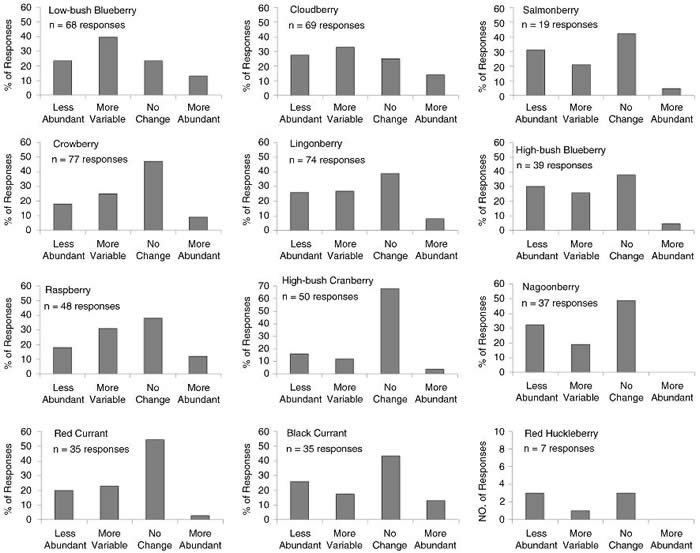
Galena school teacher Freda Beasley and her husband Howard are fairly prolific berry pickers, sometimes gathering as much as 20 gallons of blueberries and low bush cranberries in a good year. But to Freda, it seems like the good years are getting fewer and farther between.
“This year and last year, there were no blueberries,” Beasley said.
It turns out that Freda’s not alone when it came to fruitless blueberry searches recently.
“Almost 50 percent of the people that responded said (blueberries) had become more variable – there were bigger swings from one year to the next,” said research wildlife biologist Jerry Hupp with the U.S. Geologic Survey in Anchorage.
Hupp is an author of a new wild berry survey published in the International Journal of Circumpolar Health.
“That’s a fairly strong response. The number of people that responded that berries had become more variable was almost twice as high as any other response. So it suggests that, yeah, something may be going on there,” Hupp said.
Along with researchers from the Alaska Native Tribal Health Consortium and the University of Alaska Anchorage, Hupp put out a survey to environmental program managers at tribal groups, asking respondents to identify the berries that are commonly harvested in their area, and indicate whether berry harvests seem to be getting larger, smaller, more unpredictable, or staying the same.
Hupp cautions that the survey does not try to shed light on why berry populations might be rising or falling, but only to document the perceptions of experienced berry pickers.
“Our goal was not so much to understand how climate may be influencing berries–how changes in snow cover or changes in precipitation may be changing berry abundance,” said Hupp. “It was more to simply ask people, ‘Are you seeing changes? Are there things happening on the ground that might indicate that things are different now than they were in previous decades?’”
Ninety-six people from 73 Alaska communities responded. They were specifically asked to compare the berry picking experience of the past 10 years with berry picking before that.

Two berries stand out as both commonly harvested and increasingly variable: low bush blueberries and cloudberries.
The perceived decline of blueberries is most pronounced along the western and northern coasts of Alaska, where 76 percent of respondents experienced lower blueberry harvests or more variability in harvests from year to year. That view was shared by around 50 percent of blueberry pickers in the maritime region of Alaska–ranging from the Aleutians to Southeast–and 40 percent in the Interior.
High bush cranberries and crowberries, on the other hand, stand out as more consistent in their availability.
For each of the 12 berry species included in the survey, only a handful of respondents perceived an increase in berry numbers.
Hupp says that other researchers could build on the survey to learn more about the science behind berry productivity, and get a better sense of how changes in climate might affect berry populations into the future.
“Monitoring studies that would examine relationships between environmental variables and berry productions, or experimental studies that might alter things like snow cover, precipitation, and measure the response of berry species to that,” Hupp said.
